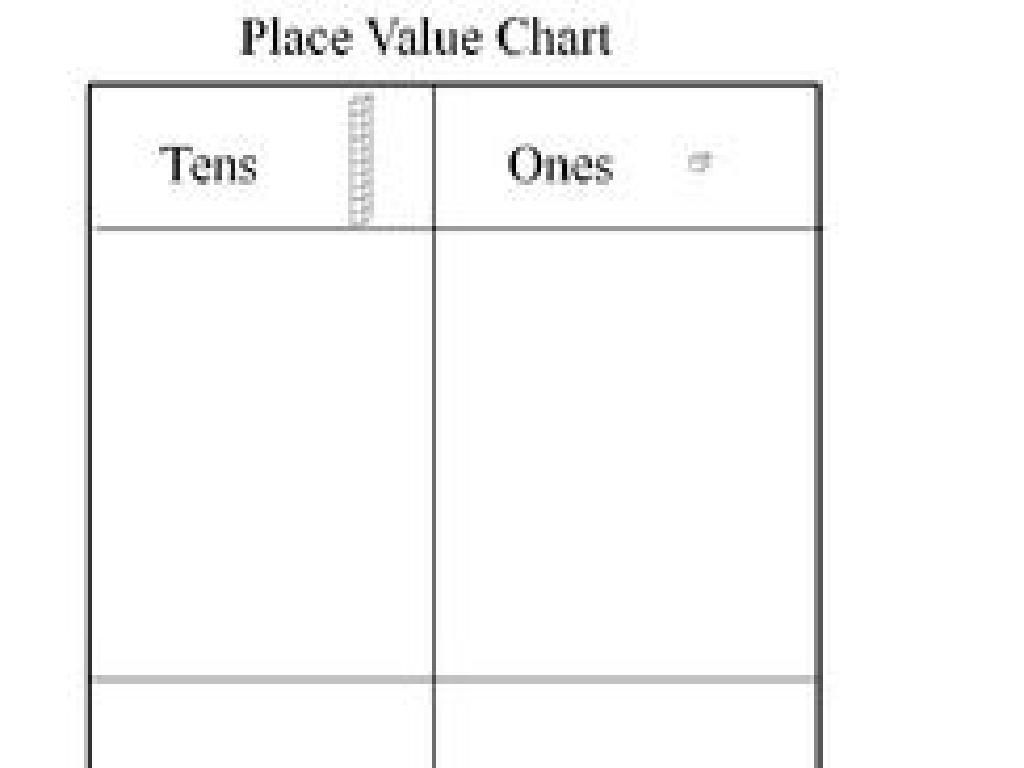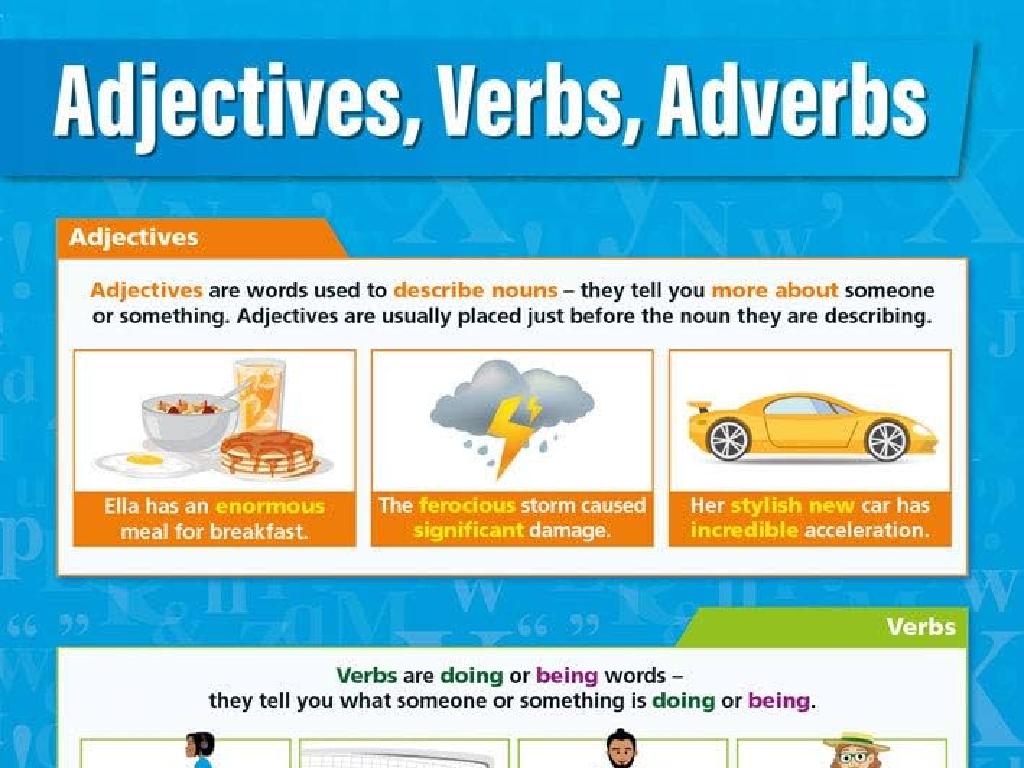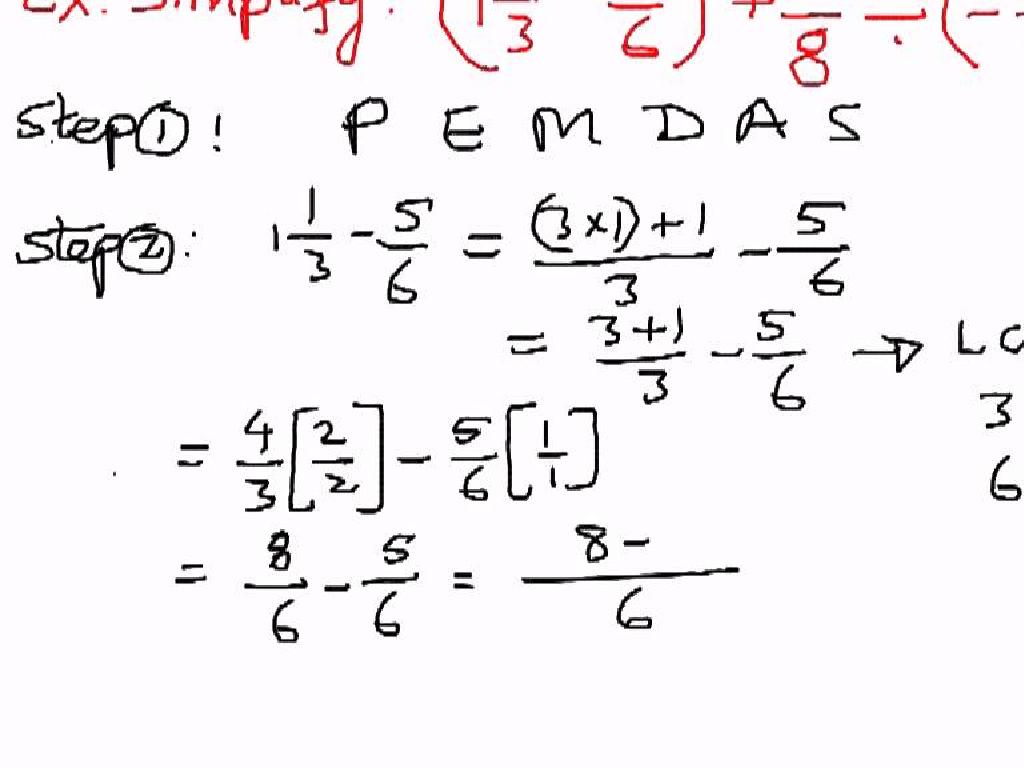Identify Equivalent Linear Expressions Ii
Subject: Math
Grade: Eighth grade
Topic: Equivalent Expressions
Please LOG IN to download the presentation. Access is available to registered users only.
View More Content
Identifying Equivalent Linear Expressions II
– Exploring algebra’s landscape
– Recap on equivalent expressions
– Expressions with the same value, different forms
– Today’s goal: Mastery of identification
– Deep dive into more challenging expressions
– Practice with complex examples
– Solve and verify equivalence with examples
|
This slide is aimed at reinforcing the students’ understanding of equivalent expressions, a fundamental concept in algebra. Begin by briefly revisiting the definition of equivalent expressions, emphasizing that they may look different but share the same value. The main objective of today’s lesson is to enhance the students’ ability to identify more complex equivalent linear expressions. Provide examples that require combining like terms, using the distributive property, and simplifying expressions. Encourage students to solve the expressions and verify their equivalence through substitution. This will prepare them for more advanced algebraic operations and improve their problem-solving skills.
What Makes Expressions Equivalent?
– Simplify to the same value
– e.g., 2(x + 3) and 2x + 6 both simplify to 12 when x=3
– Different forms, same meaning
– 3(2x + 4) vs. 6x + 12: different looks, identical values
– Examples of equivalent expressions
– 5(x – 2) = 5x – 10 and x + 4 + 3x – 4 are equivalent
– Non-examples to contrast
– 2x + 3 and 2x – 1 are not equivalent; they yield different results
|
This slide aims to clarify the concept of equivalent expressions in algebra. Emphasize that equivalent expressions will always simplify to the same value regardless of the variable’s value. Show that expressions can look different but represent the same relationship or quantity. Provide clear examples where equivalent expressions are set side by side with non-examples to highlight the differences. Encourage students to practice simplifying expressions to identify equivalency and to understand that this concept is fundamental in solving algebraic equations and inequalities.
Properties of Equality: Justifying Equivalence
– Review key properties
– Commutative, Associative, Distributive
– Justify equivalence with properties
– Use properties to show expressions are equal
– Simplify expressions using properties
– Apply properties to combine like terms
– Practice problems
|
Begin with a review of the Commutative, Associative, and Distributive Properties, ensuring students recall the basics. Explain how these properties justify the equivalence of different linear expressions by allowing the rearrangement and combination of terms. Demonstrate the application of these properties to simplify expressions, combining like terms, and factoring. Provide practice problems for students to apply these concepts, reinforcing their understanding through hands-on experience. Encourage students to explain their reasoning when simplifying expressions to deepen their comprehension of the properties’ role in establishing equivalence.
Combining Like Terms
– Identify like terms
– Terms with the same variable parts, e.g., 5a and 3a
– Rules for combining terms
– Add or subtract coefficients; keep variable part same
– Practice simplifying expressions
– Use the rules to combine terms and simplify
– Example: 3x + 4x
– Combine 3x and 4x to get 7x
|
This slide introduces the concept of combining like terms as a fundamental skill in simplifying algebraic expressions. Start by explaining that like terms have the same variable raised to the same power. Emphasize that only the coefficients of like terms are added or subtracted while the variable part remains unchanged. Provide practice problems where students can apply these rules to simplify expressions. For example, show how to combine 3x and 4x to get 7x. Encourage students to work through several examples and to check their understanding by comparing with peers. This exercise will help solidify their grasp of equivalent linear expressions.
Using the Distributive Property
– Expanding expressions with distributive property
– Distribute a multiplied value across terms inside parentheses, e.g., a(b + c) = ab + ac
– Factoring using the distributive property
– Reverse distribution to factor, e.g., ab + ac = a(b + c)
– Practice: Expand and factor expressions
– Apply both skills with practice problems to solidify understanding
|
This slide introduces the distributive property as a method to both expand and factor linear expressions. Start by explaining the process of distributing a multiplied value across terms within parentheses. Then, show how to reverse the process to factor out a common factor from terms. Provide students with practice problems to apply these skills, ensuring they understand how to switch between expanded and factored forms. Encourage students to explain their reasoning during practice to reinforce their understanding. The goal is for students to become comfortable with these processes and recognize the distributive property’s role in creating equivalent expressions.
Solving Equations with Equivalent Expressions
– Set up equations with equivalence
– Use properties to form equal expressions
– Solve by finding equivalent expressions
– Apply algebra to find solutions
– Practice solving and checking
– Solve sample problems and verify solutions
– Understand equivalence verification
– Learn methods to confirm equivalence
|
This slide introduces the concept of setting up and solving equations using equivalent expressions. Students should understand how to manipulate equations using properties like the distributive property to create equivalent expressions. Emphasize the importance of finding solutions algebraically and the necessity of checking their work by substituting the solutions back into the original equations. Provide practice problems for students to apply these concepts and verify their answers. Encourage students to explain their reasoning and the steps they took to solve the equations, reinforcing their understanding of equivalence in linear expressions.
Real-World Applications of Equivalent Expressions
– Applications in daily life
– Problem-solving techniques
– Use expressions to represent and solve real-life problems
– Budgeting with expressions
– Example: Calculating total expenses within a budget
– Shopping using expressions
– Example: Comparing costs of items to find the best deal
|
This slide aims to show students how the math they learn in class applies to everyday situations. Equivalent expressions are not just abstract concepts; they are tools we use for making decisions and solving problems. For instance, when budgeting, one might use equivalent expressions to adjust spending categories without changing the total budget. In shopping, customers use them to compare different deals and determine which purchase gives the best value for money. Encourage students to think of other scenarios where they might apply these skills, such as planning events or managing time. Provide examples and have students create their own problems based on real-life situations they’re familiar with.
Class Activity: Expression Exploration
– Group activity setup
– Find equivalent expressions
– Look for expressions that simplify to the same value
– Use provided materials
– Each group gets expression cards, a whiteboard, and markers
– Match various expression forms
– Connect different expressions that are equivalent
|
This interactive group activity is designed to help students understand the concept of equivalent expressions by finding and matching different forms of the same expression. Divide the class into small groups and provide each group with a set of expression cards, a whiteboard, and markers. The objective is for students to match cards that represent equivalent expressions, such as ‘2(x + 3)’ and ‘2x + 6’. Encourage students to discuss their reasoning with their group members and use the whiteboard to simplify expressions if necessary. As they work, circulate around the room to offer guidance and ensure that each group is engaged and on task. After the activity, bring the class together to discuss the different methods used to identify equivalent expressions and the importance of understanding this concept in algebra.
Wrapping Up: Equivalent Linear Expressions
– Recap of key concepts
– Reviewed how to identify and simplify equivalent expressions.
– Homework: Worksheet completion
– Solve problems on the provided worksheet to reinforce today’s lesson.
– Reminder: Consistent practice
– Next steps: Further exploration
– Continue practicing with additional resources and exercises.
|
As we conclude today’s lesson on equivalent linear expressions, it’s important to summarize the key points to reinforce student understanding. The homework assignment is a worksheet that will provide students with the opportunity to apply what they’ve learned by identifying and simplifying equivalent expressions. Emphasize the importance of regular practice to master these concepts. Encourage students to seek further practice beyond the homework to deepen their comprehension. In the next class, we’ll build on these skills and explore more complex expressions.






